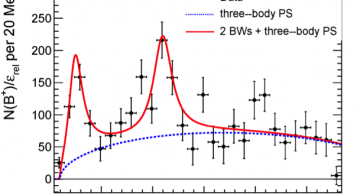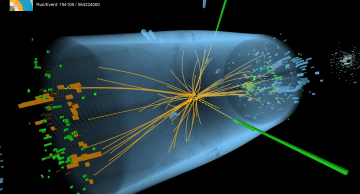In the vast particle landscape, there are, to borrow a phrase, known knowns (the Standard Model, for example), unknown unknowns (exotic extensions of the Standard Model and beyond), and those ever-interesting known unknowns. A recent CMS observation…
CMS Experiment, CERN
4 July 2012
The statement below is also available as PDF files in: English | French | Catalan | Chinese (traditional) | Chinese (simplified) | Croatian | Dutch | Finnish | Galician | German | Greek | Hindi | Hungarian | Italian…
Another day, another particle. Unlike the Higgs boson, the neutral Xi_b baryon is not expected to solve any deep, outstanding mysteries. But, sightings of its excited state are another first for the Large Hadron Collider (LHC) at CERN near Geneva,…
Researchers at the Large Hadron Collider submitted a paper to Physical Review Letters claiming that they’d discovered a new Baryon particle. This is the Xi_b^*0 – which is composed of three quarks: a strange quark, a beauty quark, and an up quark.
A never-before-seen subatomic particle has popped into existence inside the world's largest atom smasher, bringing physicists a step closer to unraveling the mystery of how matter is put together in the universe.
Physicists using the Large Hadron Collider (LHC) particle accelerator have discovered their first brand-new baryon, a particle consisting of three quarks.
It has not discovered the Higgs Boson — not yet, anyway — but the Large Hadron Collider (LHC) particle accelerator has revealed a never-before-discovered particle comprised of three quarks.
Scientists running the Large Hadron Collider, aka the "big bang machine", announced Friday they've discovered a brand new particle during one of their experiments.
No, unfortunately not yet the discovery of the century. Still, the new particle found by CMS in its 2011 dataset is a very important piece of the puzzle of low-energy spectroscopy. Here "low" should be taken with a pinch of salt: the new particle,…


